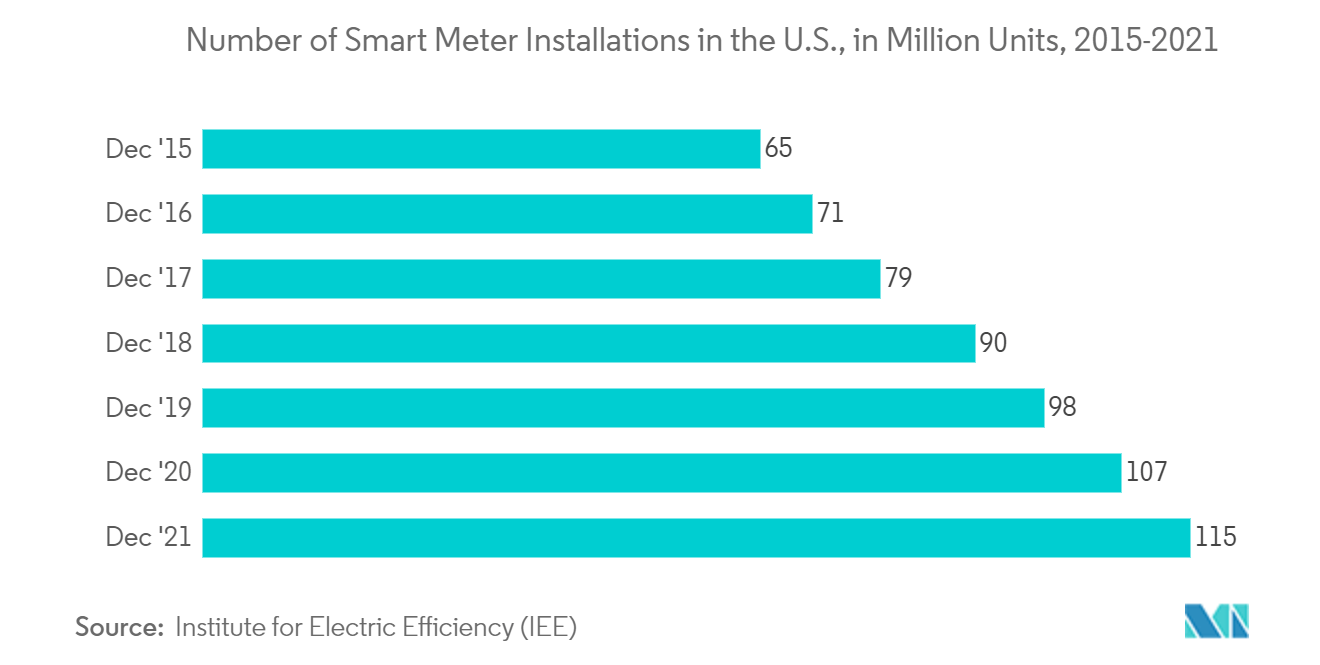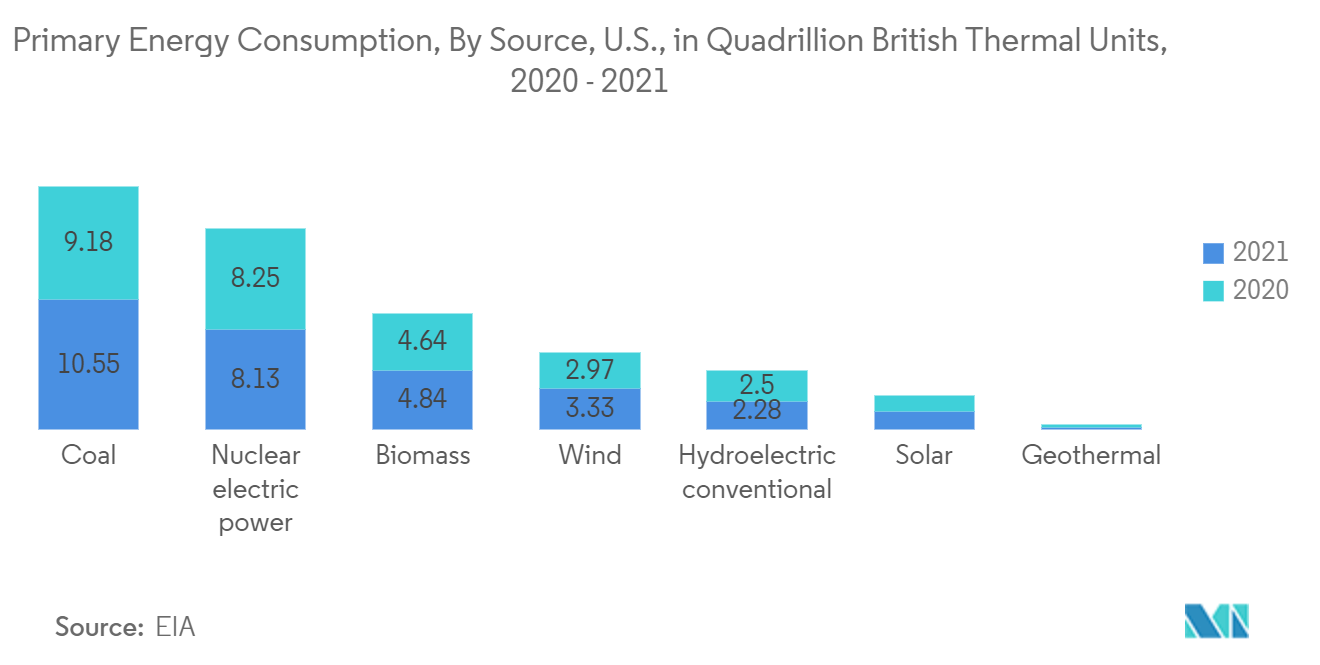Market Trends of US AMI Industry
This section covers the major market trends shaping the US Advanced Metering Infrastructure (AMI) Market according to our research experts:
Smart Metering Devices will Command a Significant Market Share
- Smart metering solutions include meters or modules with communication capabilities (either unidirectional or bidirectional) embedded within or attached to the meter. Smart meters are becoming more popular due to the primary concern of increasing energy consumption, as they enable two-way communication between the meter and the central system used by utilities.
- Additionally, the digitalization of the electrical grid is already enhancing energy systems' efficiency, security, usability, and sustainability. For instance, using smart lighting and thermostats can reduce the overall energy use in commercial and residential buildings by 10% by 2040, according to an International Energy Agency (IEA) report. In addition, significant investments in digital electricity infrastructure open up market opportunities for smart meters in the United States.
- Smart meter deployment also enables implementing a Home Energy Management System (HEMS) or Building Energy Management System (BEMS) that allows visualization of the electric power usage in individual homes or entire buildings.
- Furthermore, various grid operators, as well as other gas and water utility providers, are effectively managing the demand for smart meters. Furthermore, smart city initiatives include the use of digital technologies for smart retail, IoT, smart mobility, and smart metering in order to create a sustainable city. Thus, such factors are expected to drive market growth.
- However, the high cost associated with smart meter installation borne by end users limits the market growth. Smart meters are an important component of smart city initiatives because they rely heavily on smart grid systems to ensure flexible distribution of electricity to power their various functions. Furthermore, a smart grid in a smart city enables renewable integration and clean energy production close to where it is needed, providing an opportunity for market growth.
- Also, targeted programs to the end-users are likely to benefit alongside leveraging smart electric meters for energy efficiency. For instance, Pacific Gas & Electric, in the United States, reported AMI targeting for a home retrofit program delivered 3.5 times more energy savings in the targeted homes. Additionally, the integration of smart electric meters with technologies such as data analytics is expected to further foster the growth of the market in the region.

Shift Toward Energy Efficient/Saving Alternatives
- Advanced metering infrastructure is a technical solution to obsolete energy metering systems that improve energy efficiency by monitoring, storing, and transmitting real-time energy supply data from a business to a utility. Smart meters send digital data for utility services directly back to businesses for real-time monitoring and delivery data to the provider for resource management. Advanced metering technology can provide near-instant power, gas, and water outage alerts, as well as the amount of energy consumed and the associated cost of energy consumption across the United States.
- With easy-to-read screens that display real-time data for consumers and utilities to manage and monitor, smart energy meters keep track of the quality, quantity, and timing of energy use. Data is exchanged through secure wi-fi networks. Systems with smart meters can also provide analyses of the energy sources used, including the precise quantities of different energy sources used and calculated energy usage by particular appliances.
- Moreover, most utility companies in the United States will soon switch from traditional meters to smart meters. Utility companies and customers can offer lower prices during off-peak hours thanks to the detailed energy consumption data that smart energy meters give them.
- By significantly reducing the labor necessary to monitor energy use, smart meter technology saves utility money, enabling them to invest in smart grid development plans and other environmentally friendly technology. Smart meters eliminate anticipated bills by providing 100 percent accurate explanations of utility use, enabling businesses to better budget for utility costs.
- Moreover, The U.S. Energy Information Administration's (EIA) annual survey of electric power sales, revenue, and energy efficiency found that in 2020, 502 electric utilities had EE programs that contributed to an estimated decrease in total annual electricity consumption of about 28.2 billion kilowatt-hours (kWh). About 47% of the total annual electricity savings from utility EE programs in 2020 came from residential customers, and 44% came from commercial customers.
- Also, in September 2022, Saint-Gobain installed a smart water meter system and upgraded equipment at its siding plant in Social Circle, Georgia, US, reducing the site's water consumption by more than two million gallons per year. The project is part of Saint-Gobain's global Grow and Impact strategy, which includes ambitious environmental sustainability goals like reducing the company's consumption of water and other natural resources at its manufacturing sites.


